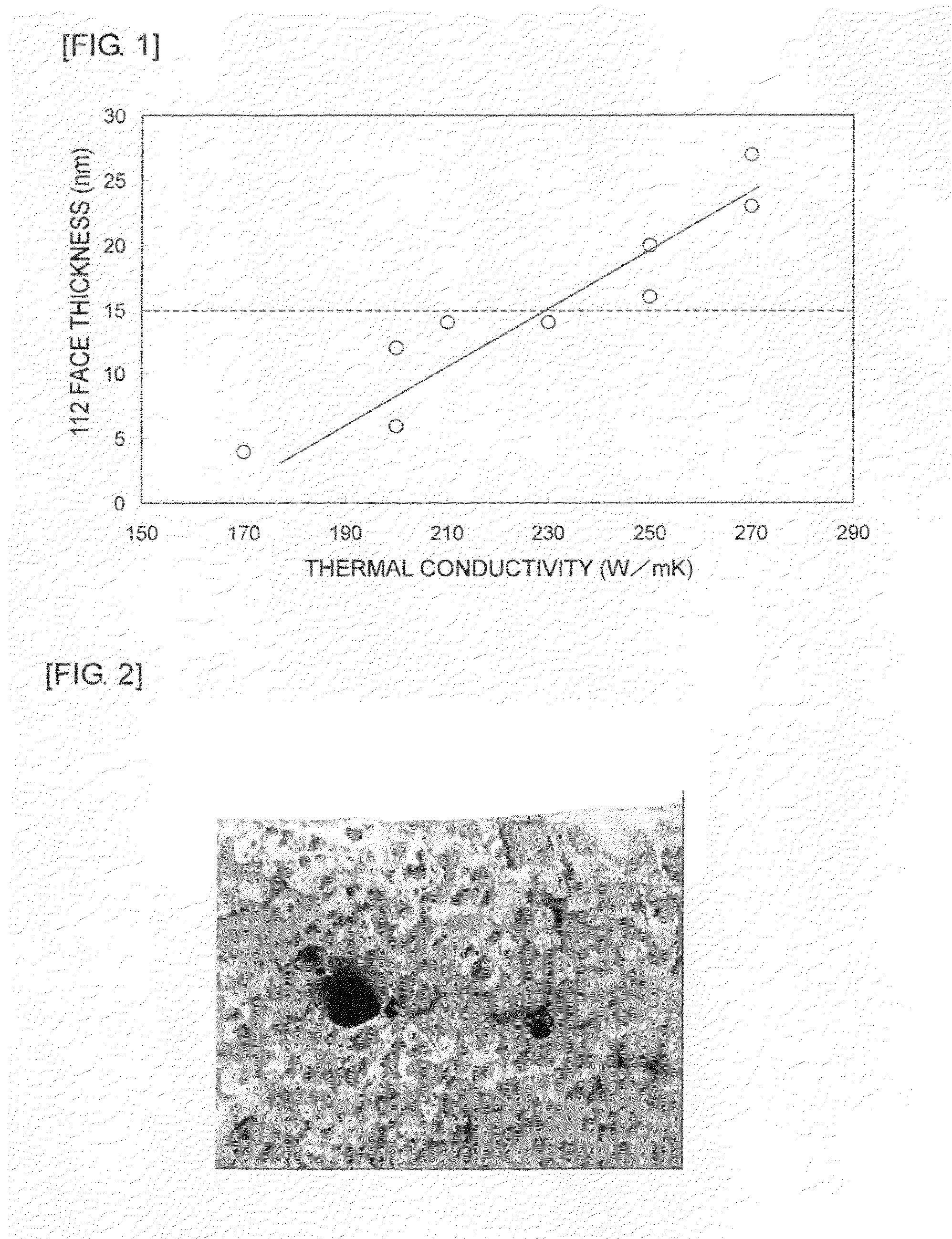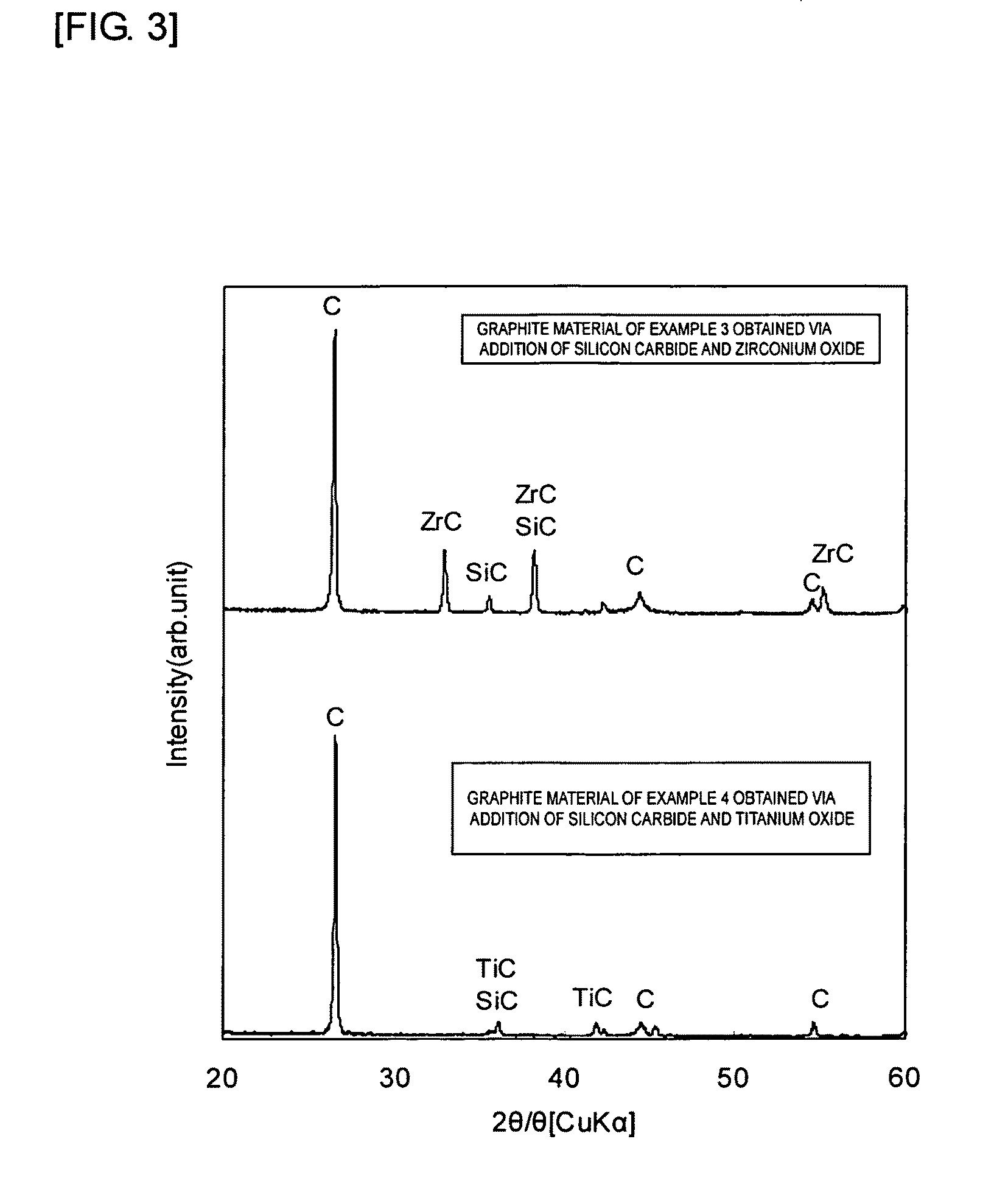Graphite material method for manufacturing the same
a graphite material and graphite technology, applied in the field of graphite materials, can solve the problems of insufficient heat transfer of graphite products, cracks or separations, and absence of a network linking graphite particles to each other, and achieve the effect of efficient heat dissipation and high thermal conductivity
- Summary
- Abstract
- Description
- Claims
- Application Information
AI Technical Summary
Benefits of technology
Problems solved by technology
Method used
Image
Examples
example 4
[0066]As shown in Table 2, 5 mass % of silicon carbide (mean particle diameter of 50 μm) and 10 mass % of titanium oxide (mean particle diameter of 50 μm) were added to manufacture a graphite material through the above-outlined first through third steps. The manufacturing conditions and the properties of the graphite material are shown in Table 2.
TABLE 2Properties of Graphite MaterialManufacturing ConditionsThermalResidual AmountPresenceLoadingsExpansionThermal(Elemental Concentration)of DefectSiCTiO2DensityCoefficientConductivitySiTid112Occurrence(mass %)(mass %)Mg / m31 × 10−6 / kW / (m · K)(mass %)(mass %)nmof HolesEx. 45101.733.52701.02.522No
[0067]As can be clearly seen from the results shown in Table 2, Example 4 also resulted in obtaining a graphite material which has a thickness of its graphite crystal in the 112 face of not less than 15 nm when subjected to X-ray diffraction and a mean thermal conductivity of not less than 250 W / (m·K). Accordingly, a graphite material is obtained ...
PUM
| Property | Measurement | Unit |
|---|---|---|
| Temperature | aaaaa | aaaaa |
| Percent by mass | aaaaa | aaaaa |
| Power | aaaaa | aaaaa |
Abstract
Description
Claims
Application Information
 Login to View More
Login to View More - R&D
- Intellectual Property
- Life Sciences
- Materials
- Tech Scout
- Unparalleled Data Quality
- Higher Quality Content
- 60% Fewer Hallucinations
Browse by: Latest US Patents, China's latest patents, Technical Efficacy Thesaurus, Application Domain, Technology Topic, Popular Technical Reports.
© 2025 PatSnap. All rights reserved.Legal|Privacy policy|Modern Slavery Act Transparency Statement|Sitemap|About US| Contact US: help@patsnap.com


